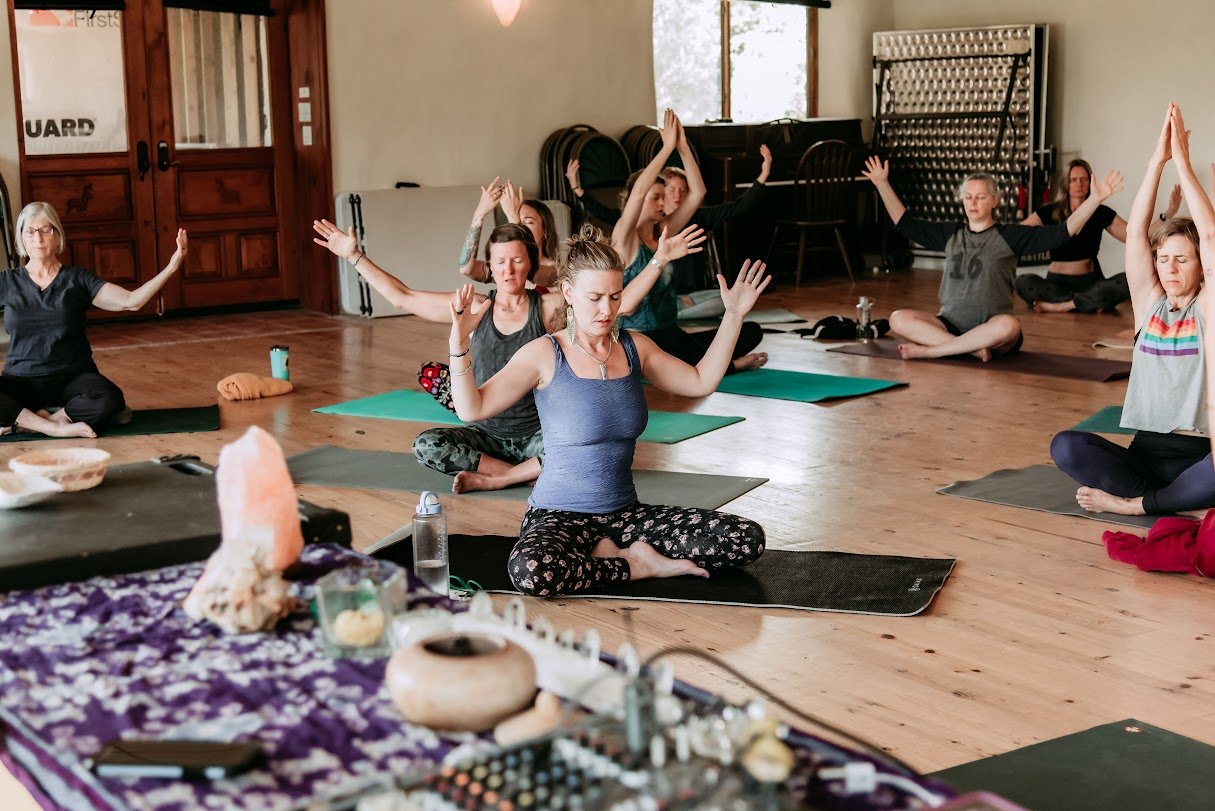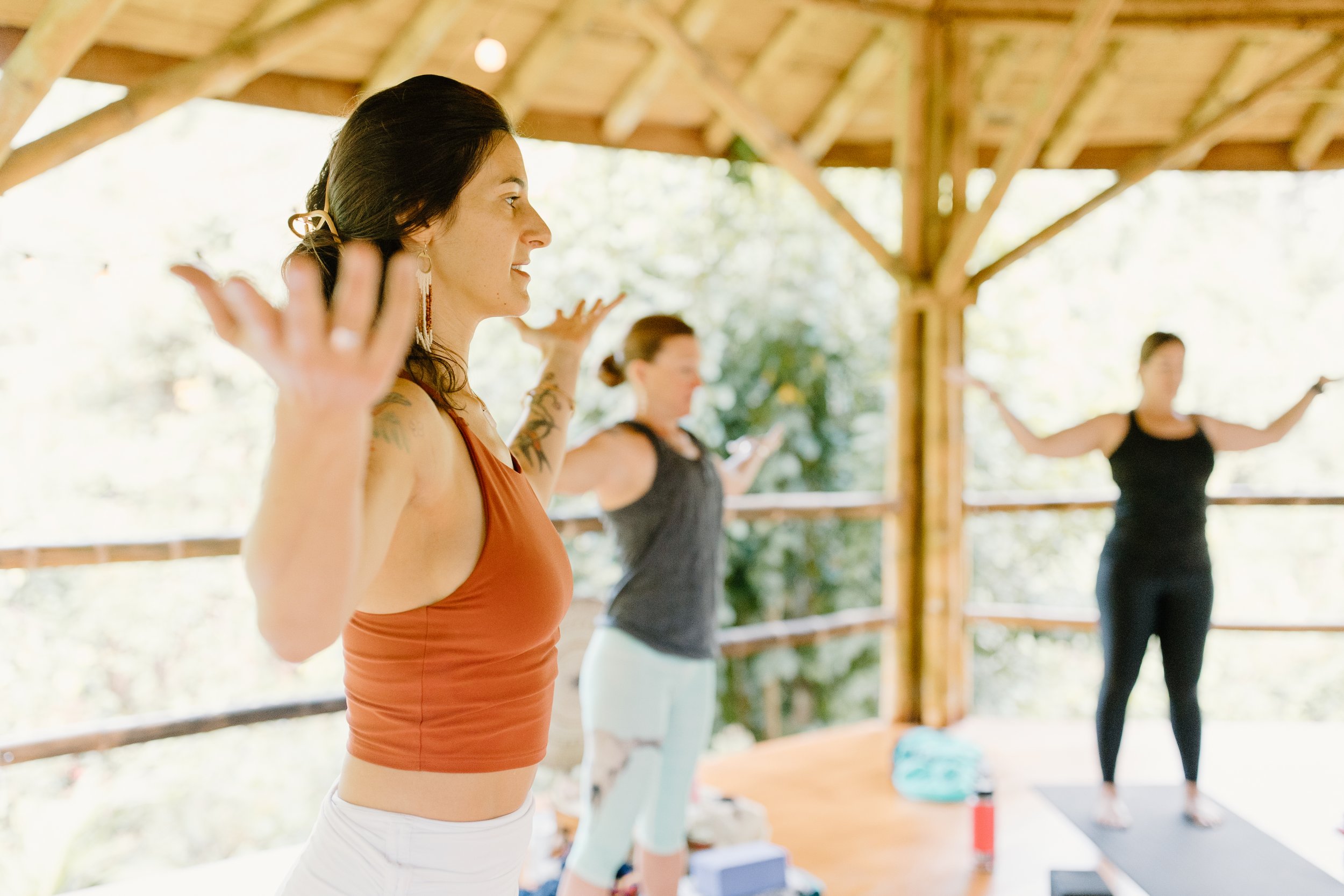We all know we’re supposed to eat healthy and limit things like processed foods, added sugars, and fried foods. So why are these things still so ubiquitous in our world? Well, for one thing, they are so darn TASTY! But with excessive rates of morbid illness like cancer and heart disease linked to these foods, I believe more education at every level will support us all to gradually adopt more beneficial eating habits. This is close to home for me since my parents both recently recovered from cancer and my dad is still recovering from a stroke caused by a blood clot. My grandmother died of pancreatic cancer, and my grandfather died of heart disease. Today I’d like to explain from an ayurvedic perspective WHY we’ll do ourselves a favor by passing on the french fries, at least most of the time!
Ayurvedically speaking, our intention in life is to enliven our own inner intelligence, which is what brings us ultimate health, inspiration, and bliss. According to ayurveda, the same cosmic intelligence that birthed the world and sprouts every plant is pulsing through our every cell. It’s what turned two single cells into a fetus, and turned that fetus into a fully formed adult. It’s the same intelligence that heals our cuts, processes what we eat, and guides our intuition as we navigate our world.
What we eat and take in through all of our senses affects our inner intelligence. We enliven it with pure, or sattvic, foods and experiences, we dull it through tamasic foods and experiences, and we make it frenetic and disjointed through rajasic foods and experiences.
When I smell and see french fries, I crave that crunchy, salty, satisfying rich flavor and crunch. In the short term, they are so enjoyable! But when I pay attention to how I feel later, I notice I feel heavy, dull, and sluggish. That’s because fried foods carry tamasic energy, the energy of inertia, that dulls our digestion and our mind, and ultimately covers up our inner intelligence.
Frying food causes complex changes to the structure of food through oxidation, polymerization, and hydrogenation. In ayurvedic terms, frying food destroys the pure intelligence that was once in the living food, whether it was a vegetable, a grain, or an animal.
Tamasic energy is also found in processed foods, red meat, alcohol, frozen and microwaved foods, as well as dive bars, funeral homes, and dank basements. It pulls our energy downwards and even leads to depression.
Sometimes we crave tamasic foods because we are in a rajasic state. Rajas is the frenetic energy of an overactive mind, the high stimulation of a rock concert, the busy environment of a school cafeteria, and the stressed state of someone with too much on their plate. Rajasic foods include overly spiced foods, caffeine, salt, onion, garlic, and refined sugar.
To optimize our health and enliven our inner intelligence, we want to limit rajasic and tamasic foods and eat mostly sattvic foods, which include fresh fruit and vegetables, whole grains, lentils, nuts and seeds, ghee, and fresh dairy products.
So, back to fried foods. Aside from clouding our senses and clogging our arteries, they are also well known from a western perspective to be linked to all the big names in scary diseases including cancer, type 2 diabetes, inflammatory and autoimmune disease, rheumatoid arthritis, asthma, and heart disease, the number one killer in America.
According to study done in 2018 at the University of Iowa, “frequent consumption of fried foods, especially fried chicken and fried fish/shellfish, was associated with a higher risk of all cause and cardiovascular mortality in women in the US.”
One potential reason for this from a western scientific perspective (which unfortunately means air fryers are not exempt), is that heating foods to high temperatures increases the production of carcinogenic compounds such as acrylamide, a compound formed in foods that become crunchy when cooked. Steaming, boiling, and sautéing produces far less of these than frying and even baking. DANG! I love that satisfying crunch!
Another rationale for the dangers of fried foods is the oils they are fried in. Most restaurants are using oils such as canola, cottonseed, vegetable, and peanut oils. These are high in omega 6 fatty acids, nicknamed the “bad fats”, compared to omega 3s, aka the “good fats” found in things like fish oil, hemp, chia, walnuts and even fruit and vegetables. Actually, we’re meant to have both of these fats, but in proper ratios. Research is still inconclusive on exactly the right ratio of omega 6s to omega 3s, but what we do know is that our ancestors generally ate close to a 1-1 ratio, and on average most people these days are having more of a 20-1 ratio. So generally reducing our intake of omega 6s is a good idea.
And you probably know that fried foods are high in saturated and trans fats, which are known to increase blood cholesterol levels. Not all cholesterol is bad of course, but the kind of cholesterol in fried foods tends to be the kind that clogs and damages the walls of your arteries.
So should we strictly avoid fried foods? No! Life is meant to be enjoyed, and when we are vital, active, and healthy we can process occasional indulgences without detriment. But can we reduce our cravings for short term pleasures by increasing our enjoyment of life’s simpler, more sattvic pleasures? Yes! I am reminded of the yogic concept asteya, meaning non-stealing, and that when I indulge in a short term pleasure now, I may be stealing from my health and comfort in the future. So have your chips and french fries, EVERY ONCE IN A WHILE, and focus on slowing down, enjoying simple pleasures, and deeply nourishing yourself with more harmonious options most of the time.
Join me on Tuesday evenings in September and October to study the incredible wisdom and science of Ayurveda. Learn your unique MindBody Type, and understand how to apply the principles of natural law to really know which diets, herbs, routines and self care practices are the right ones for you.
I'm really excited to be sharing what I've been studying for all these years, starting September 5th and OPEN TO ALL: the Ayurveda Deep Dive, an 8 week course to deeper connection with your body, your health, and the natural world.
Ayurveda, the Knowledge of Life, is a holistic method of understanding the world and your place in it. In this course, dive into the theories of Ayurveda, increase self-awareness of your unique MindBody Type, and implement lifestyle changes, dietary choices, cleansing and restorative practices that will support your health, prevent disease, and enliven your body’s inner intelligence.
Ayurveda is the ultimate preventative medicine. Investing your energy in this knowledge may save you thousands of dollars in future medical expenses, improve your physical and mental health and even increase your lifespan.
Learning ayurvedic principles allows you to look at life from the point of view of nature. Ayurveda teaches us how to live in sync with the natural world and honor our own cyclical nature. Ayurveda is not a set of rules or restrictions; it’s an understanding of the natural laws of the universe. By gradually learning and implementing these principles, we find ourselves naturally drawn to the foods, people, places, and practices that balance us.
If you have thought about studying ayurveda but aren’t ready to invest thousands of dollars in a certificate program, this is the course for you. In these 8 weeks you’ll get an in depth understanding of the foundations of ayurveda that will serve you and your family for the rest of your life, for only $333.








